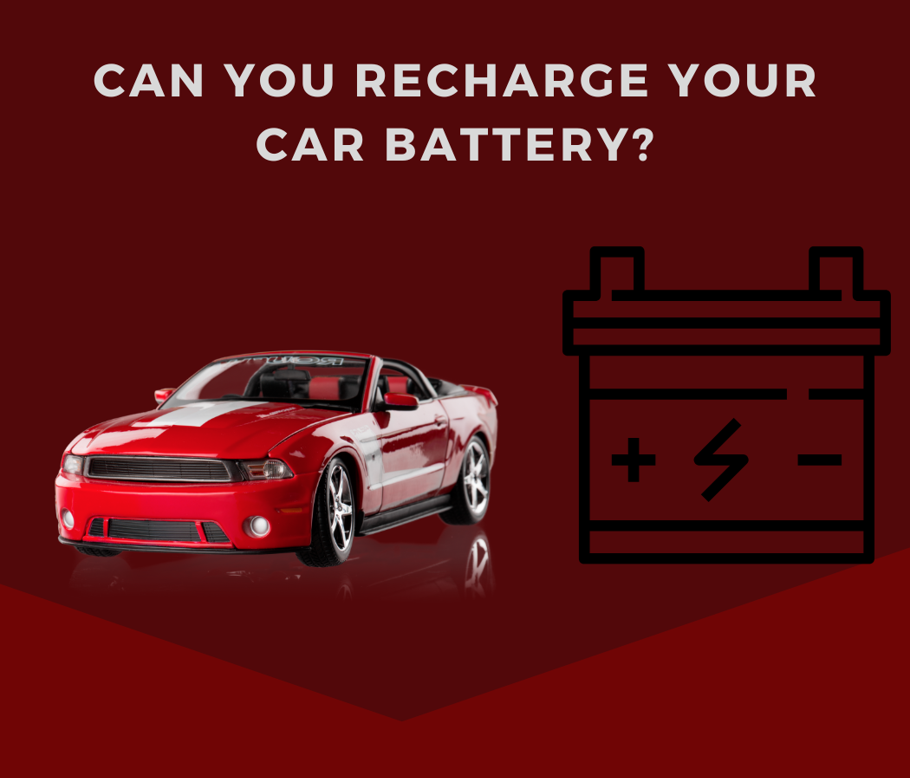Cars
If a Car Battery Dies, Can It be Recharged

Why car battery dies?
There are a few reasons why your car battery may die. One reason could be that you have let your car sit for too long without starting it up. This causes the battery to slowly lose its charge and eventually die.
Another reason could be that you have been using too many electrical accessories in your car, such as the radio or heated seats, which can drain the battery. Finally, if you have been driving in very cold weather, this can also cause the battery to die. If you think your battery may be dying,
If a car battery dies, it can be recharged but you can not do it on your own. As it requires an external greater source of power to charge it. However, it is best to take the battery to a professional to have it checked and recharged. If you try to recharge the battery yourself, you may not do it correctly and could cause further damage to the battery.
You might see that your car battery is working fine and you want to try to repair it so here is a guide for you
How to repair car batteries at home
First, it is important to identify the problem. Is the battery not holding a charge? Are the cells damaged? Or is there another issue entirely? Once you know what the problem is, you can begin to take steps to repair the battery.
If the problem is simply that the battery is not holding a charge, there are a few things you can do. Try cleaning the battery terminals with a wire brush. This will remove any corrosion that may be preventing the battery from charging properly. If that doesn’t work, you can try adding distilled water to the cells. This will help to replenish any lost electrolytes and may improve the battery’s performance.
If the cells are damaged, however, it is generally best to replace the entire battery. This is because damaged cells can cause a number of problems, including reducing the overall capacity of the battery and causing it to discharge more quickly.
In some cases, it may also be necessary to replace the battery terminals. If they are corroded or damaged, they may not be able to provide a good connection between the battery and the car. This can lead to starting problems or other issues.
How to replace car battery at home
Replacing a car battery is a relatively simple process that anyone can do. All you need is a new battery and a few tools. Follow the steps below to replace your car battery at home.
- Open the hood of your car and locate the battery. You may need to consult your car’s owner’s manual to find the exact location.
- Disconnect the negative terminal of the battery first, and then the positive terminal.
- Remove the old battery from its tray and clean any corrosion off of the terminals.
- Place the new battery in the tray and connect the positive terminal first, and then the negative terminal.
- Close the hood of your car and start it up. If the battery is properly connected, the car should start right away.
If you don’t feel comfortable replacing your car battery at home, you can always take it to a professional. Most auto shops will be happy to do it for you. Just be sure to bring along your old battery so they can recycle it.
How many types of car batteries are there?
There are three main types of car batteries: lead-acid, nickel-cadmium, and lithium-ion. Lead-acid batteries are the most common type of battery used in cars. They’re also the oldest type of battery, and have been used in cars since the early 1900s.
Lead-acid batteries work by using a chemical reaction between lead and sulfuric acid to create electrical energy. Nickel-cadmium batteries are another type of battery that’s been used in cars for many years. They work by using a chemical reaction between nickel and cadmium to create electrical energy.
Lithium-ion batteries are the newest type of battery used in cars. They work by using a chemical reaction between lithium and oxygen to create electrical energy. Lithium-ion batteries are more efficient than lead-acid and nickel-cadmium batteries, and can hold more energy.
Which car battery is best to use?
First, it’s important to choose a battery that’s designed for your specific car. Some batteries are better suited for certain makes and models than others, so it’s important to do your research before making a purchase.
Second, you’ll want to consider your driving habits when choosing a car battery. If you frequently drive in cold weather, for example, you’ll want to choose a battery that’s designed for cold weather start-ups. Similarly, if you do a lot of stop-and-go driving, you’ll want to choose a battery that can handle frequent starts and stops.
Finally, the climate you live in can also impact your car battery choice. If you live in an area with extreme temperatures, for instance, you’ll want to choose a battery that’s designed to withstand those conditions.
In general, there are a few things to keep in mind when choosing the best car battery for your needs. By keeping these factors in mind, you can narrow down your choices and find the perfect battery for your car.



















